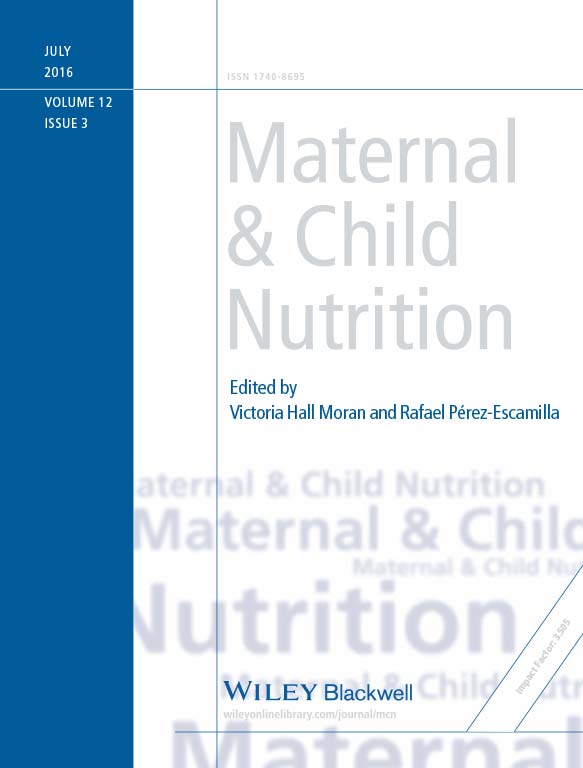This article was published in the Maternal & Child Nutrition Supplement: Availability, Promotion and Consumption of Commercial Infant Foods.
Abstract: National legislation and global guidance address labelling of complementary foods to ensure that labels support optimal infant and young child feeding practices. This cross-sectional study assessed the labels of commercially produced complementary foods (CPCF) sold in Phnom Penh (n = 70), Cambodia; Kathmandu Valley (n = 22), Nepal; Dakar Department (n = 84), Senegal; and Dar es Salaam (n = 26), Tanzania. Between 3.6% and 30% of products did not provide any age recommendation and 8.6−20.2% of products, from all sites, recommended an age of introduction of <6 months. Few CPCF products provided a daily ration (0.0−8.6%) and 14.5−55.6% of those that did exceeded the daily energy recommendation for complementary foods for a breastfed child from 6 to 8.9 months of age. Only 3.6−27.3% of labels provided accurate and complete messages in the required language encouraging exclusive breastfeeding, and almost none (0.0−2.9%) provided accurate and complete messages regarding the appropriate introduction of complementary foods together with continued breastfeeding. Between 34.3% and 70.2% of CPCF manufacturers also produced breastmilk substitutes and 41.7−78.0% of relevant CPCF products cross-promoted their breastmilk substitutes products. Labelling practices of CPCF included in this study do not fully comply with international guidance on their promotion and selected aspects of national legislation, and there is a need for more detailed normative guidance on certain promotion practices in order to protect and promote optimal infant and young child feeding.
Authors: Lara Sweet, Catherine Pereira, Rosalyn Ford, Alison B Feeley, Jane Badham, Khin Mengkheang, Indu Adhikary, Ndeye Yaga Sy Gueye, Aminata Ndiaye Coly, Cecilia Makafu and Elizabeth Zehner
View Resource
